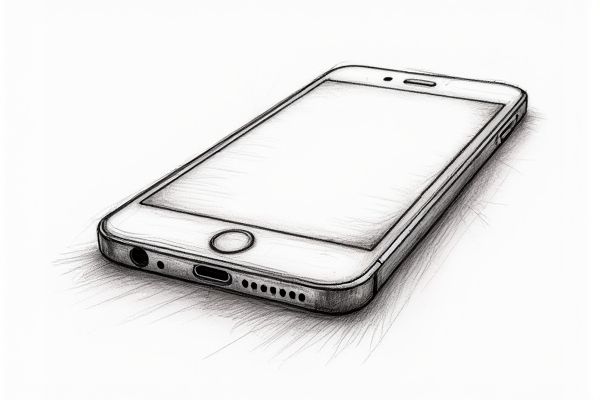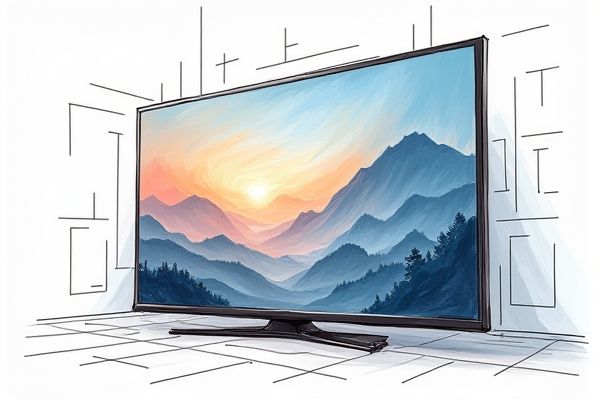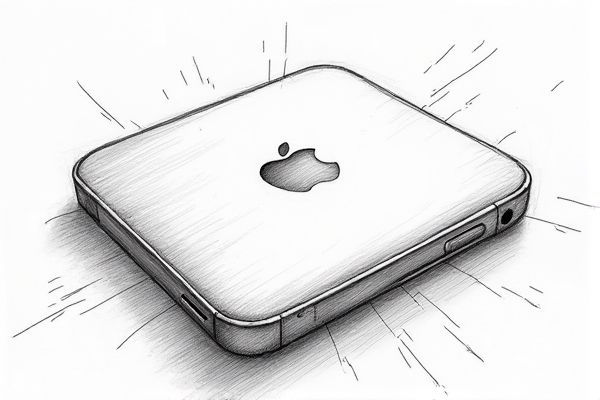In today's tech-savvy world, choosing the right smartphone brand is crucial for enhancing both personal and professional connectivity. With a plethora of options available, it can be challenging to determine which brands offer the optimal mix of performance, design, and durability. From industry leaders like Apple and Samsung, known for innovation and cutting-edge technology, to emerging contenders such as Xiaomi and OnePlus that provide competitive pricing without compromising on quality, there's a brand tailored for every preference. As we dive deeper into this topic, discover below a comprehensive list of the best smartphone brands currently dominating the market.

Illustration of smartphone
Best brands of smartphone in 2025
Apple
Apple has solidified its position as a leading smartphone manufacturer, with its iOS operating system holding over 61.3% of the U.S. market share as of 2024, a significant increase from the 42.3% in 2014. This growth is attributed to high brand loyalty, with 92% of iPhone users expressing satisfaction and nearly half unlikely to switch brands. Globally, iPhones account for 17% of smartphone shipments, and in the U.S., Apple dominates with 53% of smartphone sales. The iPhone's success is also reflected in its market performance in other developed countries, such as the UK and Germany, where it is among the top-selling handsets. Apple's commitment to innovation and quality has made the iPhone a preferred choice for many consumers. For more detailed statistics, visit the iPhone market share overview.
Samsung
Samsung is one of the leading smartphone manufacturers globally, holding a significant market share. As of the third quarter of 2024, Samsung held 18.3% of the global smartphone market share, and in 2023, the company shipped around 226.6 million smartphones, accounting for 19.4% of all smartphone shipments worldwide. Samsung's Galaxy series, first released in 2009, has been a cornerstone of their success, with the brand experiencing rapid growth from 3% market share in 2009 to 32.2% by 2012. In recent years, Samsung has consistently been among the top two smartphone manufacturers, competing closely with Apple and other major players. The company's innovative products, such as the Galaxy S22 series with advanced camera and battery features, continue to drive its market presence. For more detailed information on their products, please visit Samsung's support page.
Google is increasingly establishing itself as a significant player in the smartphone market, particularly with the success of its Pixel series. The Pixel 9 series has driven strong sales, helping Google achieve around a 12% market share in the US, a notable increase from previous years. This growth indicates that Google's efforts in refining its devices are paying off, with the Pixel 9 Pro being highlighted as one of the best phones of 2024. Despite fluctuations in market share data, Google's overall trend shows a steady rise in popularity, posing a competitive challenge to dominant brands like Apple and Samsung. For more insights on how Google's surging Pixel sales are transforming the market, click here.
Xiaomi
Xiaomi has solidified its position as one of the leading smartphone producers globally, achieving a significant 11.9% market share in January 2024 and becoming the third-largest smartphone brand worldwide. In 2023, Xiaomi shipped 145.6 million smartphones, with a remarkable 23% increase in the last quarter to 40.7 million handsets. The company's revenue from smartphones in Q1 2024 was $6.42 billion, marking a 32.9% increase from Q1 2023. Xiaomi's MIUI-based smartphones were used by over 600 million people in 2023, and the brand's global market share stood at around 12.5%. Xiaomi's strategy of offering good value for money has contributed to its healthy profit margins, with a smartphone gross profit margin of 14.6% in 2023.
OnePlus
OnePlus has established itself as a significant player in the smartphone market, particularly known for offering high-end quality at affordable prices. Founded in 2013 by Pete Lau and Carl Pei, the company has expanded rapidly, with notable successes such as being the third best-selling premium smartphone in Sweden and fourth in the UK, France, Germany, and the Netherlands in Q2 of recent years. As of 2024, OnePlus has released a diverse range of smartphones, including the flagship OnePlus line, the mid-range Ace line, and the budget-oriented Nord line, with 27 models in the flagship line, 8 in the Ace line, and 18 in the Nord line. The company's strategy of balancing high-end quality with lower prices has resonated well with consumers, contributing to its growing market share. OnePlus has also made significant strides in software development, merging its OxygenOS with Oppo's ColorOS to standardize and streamline software updates. For more information about their products and innovations, visit their official website.
Huawei
Huawei, a leading smartphone manufacturer, holds a 4% global smartphone market share as of July 2023, and boasts a significant 17% market share in the Mainland China smartphone market in Q1 2024. The company made a remarkable comeback to the top spot after 13 quarters by shipping 11.7 million smartphones. In the Asian market, although its market share decreased to 3.71% as of March 2024, Huawei remains a major player, having peaked at nearly 10% in 2020. Furthermore, Huawei is a frontrunner in 5G core solutions, holding a 24.8% share of 5G subscribers by RAN vendor. The expansive adoption of Huawei's Harmony OS, with 320 million active installations as of 2022, underscores its influence in mobile technology. Huawei's robust R&D investment, totaling CNY997.3 billion in 2022, solidifies its formidable presence in the tech industry.
Oppo
Oppo has established itself as one of the leading smartphone manufacturers globally, capturing a 10% share of the global smartphone market in the first half of 2023 with 51.9 million shipments. In China, Oppo dominated with an 18% market share, making it the top-selling brand in the country for that period. By 2023, Oppo held the fourth spot in the worldwide mobile market, shipping almost 103.1 million units and capturing 8.8% of the industry's share. The company's success is also driven by its focus on innovative products, such as the Find X6 series and foldable smartphones, with a strong presence in China's foldable market. As of the third quarter of 2024, Oppo maintained a global market share of over 9% and shipped around 29 million units. For more details about Oppo's innovations and market presence, visit their official website.
Sony
Sony, despite facing challenges, remains a notable player in the smartphone market, holding a 3.5% global market share in the first half of 2024, with approximately 6 million smartphones sold worldwide. The company's Xperia series, particularly the Xperia 1 V, has been a significant contributor to its success, featuring advanced technology such as the Snapdragon 8 Gen 3 processor and a 48MP quad-camera system. However, Sony's mobile sales have dropped by 40% in 2023 compared to the previous year, and a similar decline is expected in 2024. Despite this, Sony continues to innovate and adapt its strategy to remain competitive. The company's focus on cutting-edge technology and photography prowess has maintained a loyal customer base.
LG
LG, although no longer in the smartphone market, was renowned for its innovative features and unique designs, capturing a 1.5% global market share before its exit. The brand introduced industry-firsts like the ultra-wide camera and modular smartphone design, earning a loyal customer base despite stiff competition. LG's commitment to innovation and quality was evident in its products. However, its recent exit will see its market share redistributed among other players. LG's legacy in the smartphone industry is marked by its pioneering technologies. For more insights on global smartphone market shares, visit this comprehensive report.
Vivo
Vivo has solidified its position as a leading smartphone manufacturer, particularly in the Chinese market, where it maintained a 19% market share in Q3 2024. The brand's success is attributed to its diverse product portfolio, including new mid-range launches that boosted both offline and online sales. Vivo's shipments surged 25% year on year to 13.0 million units in Q3 2024, reflecting its strong market presence. With an annual production capacity of nearly 200 million units, Vivo serves over 400 million users in more than 60 countries. The company's focus on technological innovation, especially in 5G, AI, and imaging technology, has been instrumental in its growth. More details can be found in the China smartphone market report for Q3 2024.
















Leave a Reply
Your email address will not be published.